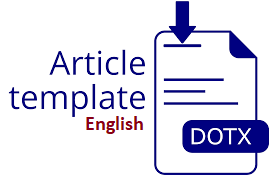Kombinasi Principal Component Analysis dengan Algoritma K-Means untuk Klasterisasi Data Stunting
DOI:
https://doi.org/10.30865/klik.v5i1.1977Keywords:
Stunting; K-Means; Principal Component Analysis; Elbow Method; Silhouette MethodAbstract
Dompu Regency in West Nusa Tenggara ranks as the fourth highest regency in terms of stunting prevalence among toddlers in the NTB province in 2022, with a rate of 34.5%. This study utilizes data from the Dompu Regency Health Office in 2023, covering 81 villages and six variables that influence the prevalence of stunting. The objective of this research is to determine and understand the characteristics of areas based on stunting factors in Dompu Regency using the K-Means Clustering method combined with Principal Component Analysis (PCA). The K-Means method produces clusters that represent areas with different characteristics, derived from the data reduction results of PCA, which form the principal components. The optimization of the number of clusters using the Elbow method indicates 3 clusters, consisting of Zone Type 1 with 42 villages, Zone Type 2 with 12 villages, and Zone Type 3 with 27 villages. Subsequently, an evaluation phase using the Silhouette method resulted in 2 clusters: Zone Type 1 with 54 villages and Zone Type 2 with 22 villages, with a Silhouette Score of 0.53, indicating a fairly good cluster structure. PCA produced two principal components with the highest eigenvalues, each explaining 58.7% and 14.28% of the variance, with a cumulative variance of 72.9%. This demonstrates that these two principal components can effectively represent the factors influencing stunting prevalence in Dompu Regency.
Downloads
References
M. V. Moksin, R. Muslim, and S. N. Ishak, “Pencegahan Stunting Di Wilayah Ternate Melalui Perubahan Perilaku Wanita Hamil,” Jurnal Ilmiah Serambi Sehat, vol. 15, no. 1, 2022.
D. R. Sari, “Metode Principal Component Analysis (PCA) Sebagai Penanganan Asumsi Multikolinearitas (Studi Kasus: Data Produksi Tapioka) Principal Component Analysis (PCA) Method to Handle Multicollinearity Assumptions (Case Study: Tapioca Production Data),” Parameter: Jurnal Matematika, Statistika dan Terapannya, vol. 2, no. 2, 2023, doi: 10.30598/parameterv2i02pp115-124.
H. Shen and Z. Duan, “Application research of clustering algorithm based on K-means in data mining,” 2020 International Conference on Computer Information and Big Data Applications (CIBDA), 2020, doi: 10.1109/CIBDA50819.2020.00023.
S. S. Dewanti and A. J. B. Pramono, “Dominant factors that determine college students completing studies in mathematics education study programs,” REID (Research and Evaluation in Education), vol. 9, no. 1, 2023, doi: 10.21831/reid.v9i1.51081.
K. Hilmi Izzuddin and A. W. Wijayanto, “Pemodelan Clustering Ward, K-Means, DIANA, dan PAM dengan PCA untuk Karakterisasi Kemiskinan Indonesia Tahun 2021,” Komputika: Jurnal Sistem Komputer, vol. 13, no. 1, 2024, doi: 10.34010/komputika.v13i1.10803.
S. Surono, K. W. Goh, C. W. Onn, and F. Marestiani, “Developing an optimized recurrent neural network model for air quality prediction using K-means clustering and PCA dimension reduction,” International Journal of Innovative Research and Scientific Studies, vol. 6, no. 2, 2023, doi: 10.53894/ijirss.v6i2.1427.
I. A. Rosyada and D. T. Utari, “Penerapan Principal Component Analysis untuk Reduksi Variabel pada Algoritma K-Means Clustering,” Jambura Journal of Probability and Statistics, vol. 5, no. 1, 2024. doi: 10.34312/jjps.v5i1.18733.
R. A. Farissa, R. Mayasari, and Y. Umaidah, “Perbandingan Algoritma K-Means dan K-Medoids Untuk Pengelompokkan Data Obat dengan Silhouette Coefficient,” Journal of Applied Informatics and Computing (JAIC), Vol.5, No.2, 2021, doi: 10.30871/jaic.v5i1.3237.
A. Iskandar, R. Aldy Al Hafizh Harahap, and A. Gilang Ramadhan, “Data Mining Customer Clustering Using K-Means Method,” International Journal of Economic Literature, vol. 2, no. 3, pp. 927–944, 2024.
D. A. Awaliyah, B. Prasetiyo, R. Muzayanah, and A. D. Lestari, “Optimizing Customer Segmentation in Online Retail Transactions through the Implementation of the K-Means Clustering Algorithm,” Scientific Journal of Informatics, vol. 11, no. 2, 2024, doi: 10.15294/sji.v11i2.6137.
S. Suraya, M. Sholeh, and U. Lestari, “Evaluation of Data Clustering Accuracy using K-Means Algorithm,” International Journal of Multidisciplinary Approach Research and Science, vol. 2, no. 01, pp. 385–396, 2023, doi: 10.59653/ijmars.v2i01.504.
E. Santri and D. Brahma, “Journal of Artificial Intelligence and Engineering Applications Analysis Of Poverty Level Mapping In Riau Province Using The K-Means Method,” Journal of Artificial Intelligence and Engineering Applications (JAIEA), vol. 3, no. 2, 2024, doi: 10.59934/jaiea.v3i2.414.
R. Yuniar Putri Sayda et al., “Pengetahuan Ibu Hamil tentang Konsumsi Tablet Tambah Darah sebagai Upaya Pencegahan Stunting di Surabaya Timur,” Jurnal Farmasi Komunitas vol. 11, no. 1, 2024, [Online]. Available: https://orcid.org/0000-0002-6023-9326.
S. S. Lintang and F. Azkiya, “Hubungan Inisiasi Menyusu Dini (Imd) Dengan Kejadian Stunting Pada Bayi Usia 0-24 Bulan Di Puskesmas Kramatwatu Tahun 2021,” Journal of Midwifery, vol. 10, no. 2, pp. 155–160, 2022, doi: 10.37676/jm.v10i2.3274.
D. P. Windasari, I. Syam, and L. S. Kamal, “Faktor hubungan dengan kejadian stunting di Puskesmas Tamalate Kota Makassar,” AcTion: Aceh Nutrition Journal, vol. 5, no. 1, p. 27, 2020, doi: 10.30867/action.v5i1.193.
A. Yuniarti and A. Setiarini, “Konsumsi Vitamin A untuk Mencegah Kejadian Stunting?: Systematic Review,” Media Publikasi Promosi Kesehatan Indonesia (MPPKI), vol. 7, no. 3, pp. 588–595, 2024, doi: 10.56338/mppki.v7i3.4784.
E. Noorhasanah, N. Isna Tauhidah, M. Chalida Putri, P. S. Studi, and K. Ners Fakultas Keperawatan dan Ilmu Kesehatan Universitas Muhammadiyah Banjarmasin, “Faktor-Faktor Yang Berhubungan Dengan Kejadian Stunting Pada Balita di Wilayah Kerja Puskesmas Tatah Makmur Kabupaten Banjar (Factors Related to Stunting Evens In Children In The Working Area of Puskesmas Tatah Makmur)” Journal of Midwifery and Reproduction, vol. 4, no. 1, 2020, doi: 10.35747/jmr.v4i1.559.
M. Adzura, F. Fathmawati, Y. Yulia, J. K. Lingkungan, P. Kesehatan, and K. Pontianak, “Hubungan Sanitasi, Air Bersih Dan Mencuci Tangan Dengan Kejadian Stunting Pada Balita Di Indonesia Relationship of Sanitation, Clean Water, and Handwashing with Stunting in Children in Indonesia.” Jurnal Sulolipu : Media Komunikasi Sivitas Akademika dan Masyarakat., vol. 21 no.1 2021, doi: 10.32382/sulolipu.v21i1.2098.
N. A. Maori, “Metode Elbow Dalam Optimasi Jumlah Cluster Pada K-Means Clustering,” Simetris : Jurnal Teknik Mesin, Elektro dan Ilmu Komputer, vol. 14, no. 1, 2023, doi: 10.24176/simet.v14i2.9630.
N. Nugroho and F. D. Adhinata, “Penggunaan Metode K-Means dan K-Means++ Sebagai Clustering Data Covid-19 di Pulau Jawa,” TEKNIKA: Jurnal Teknologi Informasi dan Komunikasi, vol. 11, no. 3, pp. 170–179, 2022, doi: 10.34148/teknika.v11i3.502.
Bila bermanfaat silahkan share artikel ini
Berikan Komentar Anda terhadap artikel Kombinasi Principal Component Analysis dengan Algoritma K-Means untuk Klasterisasi Data Stunting
ARTICLE HISTORY
Issue
Section
Copyright (c) 2024 Gladys Fouriza Ibanez, Giri Wahyu Wiriasto, Rosmaliati

This work is licensed under a Creative Commons Attribution 4.0 International License.
Authors who publish with this journal agree to the following terms:
- Authors retain copyright and grant the journal right of first publication with the work simultaneously licensed under Creative Commons Attribution 4.0 International License that allows others to share the work with an acknowledgment of the work's authorship and initial publication in this journal.
- Authors are able to enter into separate, additional contractual arrangements for the non-exclusive distribution of the journal's published version of the work (e.g., post it to an institutional repository or publish it in a book), with an acknowledgment of its initial publication in this journal.
- Authors are permitted and encouraged to post their work online (e.g., in institutional repositories or on their website) prior to and during the submission process, as it can lead to productive exchanges, as well as earlier and greater citation of published work (Refer to The Effect of Open Access).
















